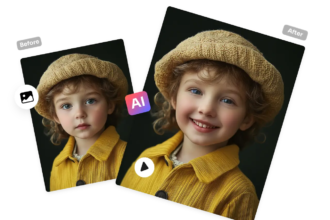In the age of digital communication, shifting social norms, and increasing global mobility, the nature of human connection has transformed dramatically. Modern relationships are complex, evolving entities shaped by cultural changes, technological innovation, and individual preferences. Whether romantic, platonic, or familial, relationships today are more fluid, inclusive, and diverse than ever before.
In this article, we delve deep into the dynamics of modern relationships—what defines them, how they differ from traditional relationships, and what challenges and opportunities they present in today’s fast-paced world. Click here to read more.
Defining Modern Relationships
Modern relationships refer to contemporary forms of connection between individuals that often deviate from historical or traditional frameworks. These relationships are not necessarily bound by conventional expectations such as marriage, gender roles, or lifelong monogamy. Instead, they are built on mutual respect, communication, emotional intimacy, and personal growth.
Some defining features of modern relationships include:
- Greater emphasis on emotional compatibility and personal fulfillment
- Diverse relationship models (e.g., open relationships, long-distance, polyamory)
- Increased awareness and conversation around mental health
- Gender equality and shared responsibilities
- Use of technology in building and maintaining connections
Unlike past generations, where societal and familial pressures often dictated the course of relationships, people today enjoy greater freedom to define love and commitment on their own terms.
The Role of Technology
Technology plays a central role in modern relationships, influencing how people meet, communicate, and maintain intimacy. Dating apps, social media, and video conferencing tools have redefined the boundaries of proximity and presence.
From Tinder and Bumble to long-distance Zoom calls, technology offers both convenience and complexity. It allows people to connect instantly but also contributes to issues like ghosting, superficiality, and emotional detachment.
While technology enhances accessibility, it also requires intentionality. In , couples must often navigate digital boundaries, ensure healthy communication habits, and resist the temptation of endless options.
Communication in
At the heart of all lies communication—honest, open, and consistent. Unlike older relationship models that sometimes prioritized endurance over emotional expression, today’s relationships thrive on vulnerability and mutual understanding.
Some hallmarks of communication in include:
- Expressing emotional needs and boundaries
- Active listening and empathy
- Navigating conflict constructively
- Discussing expectations around exclusivity, roles, and future plans
As individuals become more emotionally literate and self-aware, they bring greater depth to their relationships. However, the abundance of communication tools also means there’s a need for digital etiquette, timing, and tact.
The Rise of Non-Traditional Relationship Models
Perhaps one of the most striking features of is the rise in alternative relationship models. While monogamy remains a popular choice, more people are exploring non-traditional formats that align with their values and desires.
Examples of such models include:
- Open relationships: Partners agree to pursue romantic or sexual experiences outside the primary relationship.
- Polyamory: The practice of engaging in multiple romantic relationships simultaneously with the consent of all parties involved.
- Long-distance relationships: Enabled by technology, these relationships challenge geographical constraints.
- Co-parenting without romance: Individuals choose to raise children together without being romantically involved.
These models reflect the shift toward autonomy, authenticity, and consent-based dynamics in .
The Influence of Culture and Society
Cultural shifts have had a profound impact on how people form and sustain relationships. Gender roles have evolved, marriage rates have declined, and societal acceptance of LGBTQ+ relationships has expanded.
are no longer one-size-fits-all. People are questioning traditional milestones like marriage, children, and homeownership. Instead, they are prioritizing emotional well-being, career goals, and life experiences.
Social media also shapes perceptions of relationships, often presenting curated, idealized versions of love. While this can inspire, it can also create unrealistic expectations and foster comparison.
Challenges in
With freedom comes complexity. face unique challenges that require emotional intelligence and resilience to overcome.
Common issues include:
- Fear of commitment: With so many choices and changing norms, some people struggle to commit fully.
- Over-dependence on technology: Constant connectivity can blur boundaries and reduce quality time.
- Mental health strains: Anxiety, depression, and burnout can impact intimacy and communication.
- Changing priorities: Individual goals sometimes lead to emotional distance or incompatible paths.
Addressing these challenges requires mutual effort, self-awareness, and, in many cases, therapy or counseling.
The Role of Therapy and Self-Help
Therapy is increasingly seen as a proactive tool for strengthening . Couples therapy, individual counseling, and even relationship coaching are widely accepted methods of navigating relationship difficulties.
Key benefits of therapy include:
- Improving communication skills
- Healing from past trauma
- Building trust and intimacy
- Enhancing conflict resolution strategies
Self-help resources such as books, podcasts, and workshops also empower individuals to grow both personally and relationally. In , continuous growth and learning are essential for long-term satisfaction.
Love Languages and Emotional Intelligence
Understanding love languages and practicing emotional intelligence are cornerstones of healthy . Developed by Dr. Gary Chapman, the five love languages—words of affirmation, acts of service, receiving gifts, quality time, and physical touch—highlight how people give and receive love differently.
Being emotionally intelligent means recognizing and regulating one’s own emotions while empathizing with a partner’s feelings. In , this leads to deeper connection and fewer misunderstandings.
Equality and Shared Responsibilities
Gone are the days when relationships were defined by rigid gender roles. are built on equality, shared responsibilities, and mutual respect.
This shift includes:
- Shared household duties
- Equal financial contributions (or agreed-upon arrangements)
- Joint decision-making
- Support for each other’s careers and aspirations
When both partners contribute equally—emotionally, mentally, and logistically—it fosters a healthier, more balanced dynamic.
Social Expectations vs. Personal Desires
Navigating often involves balancing social expectations with personal desires. Some people feel pressured to follow conventional timelines, while others choose alternative paths that reflect their individual values.
The key is intentionality. Rather than conforming to external norms, thrive when partners define their own goals and milestones. This includes discussing marriage, children, finances, and even whether to maintain a traditional or unconventional relationship model.
Parenting in
Parenting has also evolved within . Today’s parents are more likely to co-parent as equals, engage in conscious parenting, and prioritize mental health—for both themselves and their children.
Additionally, blended families, same-sex parenting, and single-parent arrangements are increasingly common and accepted. These variations reflect the broad spectrum of family life in the modern era.
The Impact of Work-Life Balance
Work commitments and ambition can both support and strain . As people pursue demanding careers, maintaining intimacy requires intentional effort and time management.
Modern couples often:
- Schedule quality time to reconnect
- Use shared calendars to align routines
- Support each other’s professional goals
- Set boundaries between work and personal life
Work-life balance isn’t just a corporate buzzword—it’s a relationship necessity.
Conclusion: Embracing the Fluidity of
As we move further into the 21st century, the way people connect, love, and live continues to evolve. are not defined by rigidity, but by fluidity, authenticity, and mutual respect. While they come with new challenges, they also offer unprecedented freedom and potential for personal growth.
By prioritizing communication, empathy, and intentionality, individuals can cultivate fulfilling, meaningful relationships that align with their values. Whether you’re navigating dating apps, redefining marriage, or building a co-parenting arrangement, provide the canvas for connection in a world that is ever-changing.
The future of love isn’t written in stone—it’s a living, breathing experience shaped by the choices we make, the values we uphold, and the love we give.















